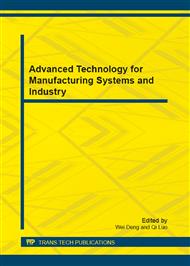p.493
p.497
p.503
p.509
p.515
p.521
p.526
p.530
p.536
A Novel Design of Experiments for Global Optimization of Light-Gauge Steel Wall Sound Isolation Systems
Abstract:
In this paper, we develop a novel algorithm that determines the overall best parameter setting in design of experiments. The algorithm begins with successive orthogonal array experiments and ends with a full factorial experiment. The setup for the next orthogonal-array experiment is obtained from the previous one by either fixing a factor at a given level or by reducing the number of levels considered for all currently non-fixed factors. We illustrate this method using a light-gauge steel wall sound isolation system with four parameters, each with three levels. In previous work, the full factorial of =81 experiments was conducted and the best parameter settings was found. With the proposed algorithm, we found the same result using 15 experiments. As a further comparison, we obtained the optimum using a traditional Taguchi method, and found it corresponded to the of the 81experiments when sorted by the objective (or quality) function. We conclude the proposed algorithm would provide an accurate, fast, and economic tool for global optimization of design of experiments.
Info:
Periodical:
Pages:
515-520
Citation:
Online since:
November 2012
Authors:
Price:
Сopyright:
© 2012 Trans Tech Publications Ltd. All Rights Reserved
Share:
Citation:


